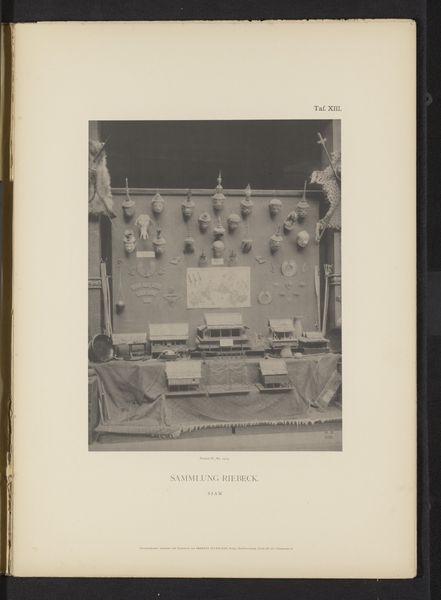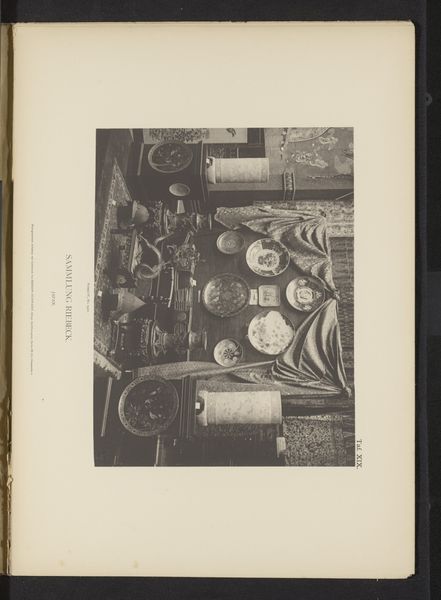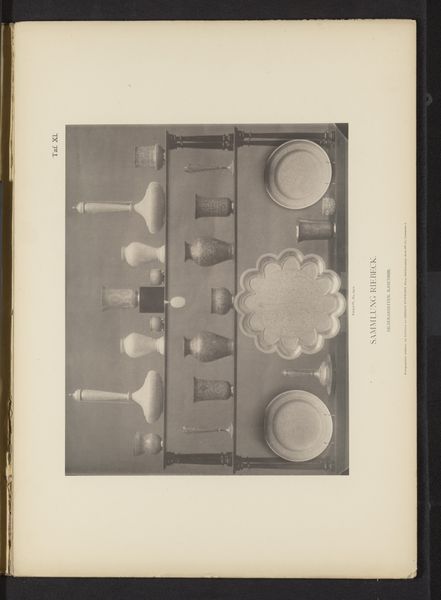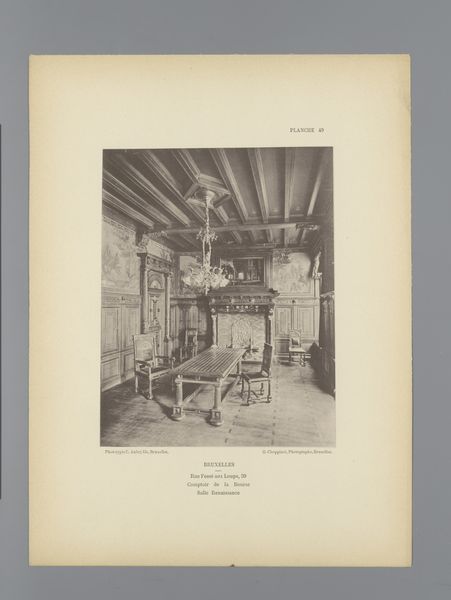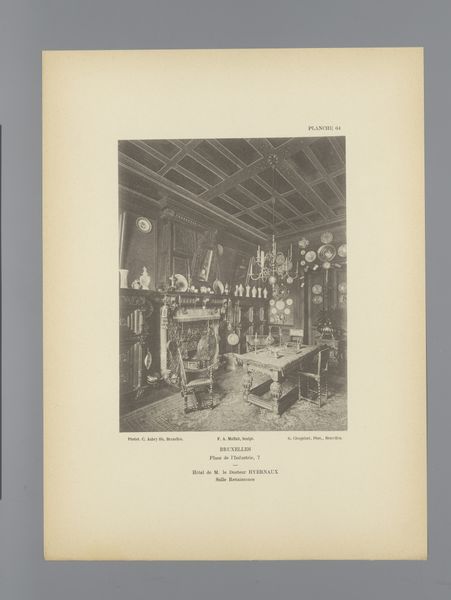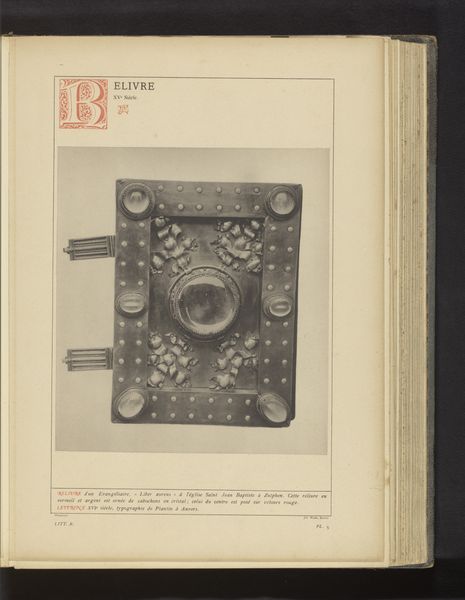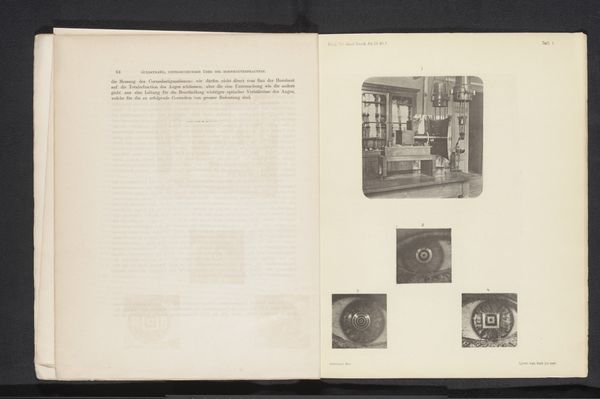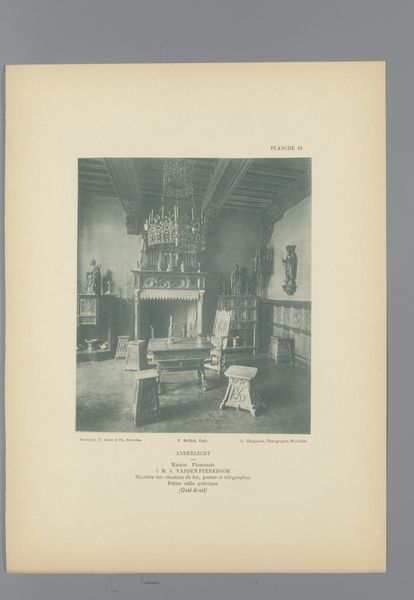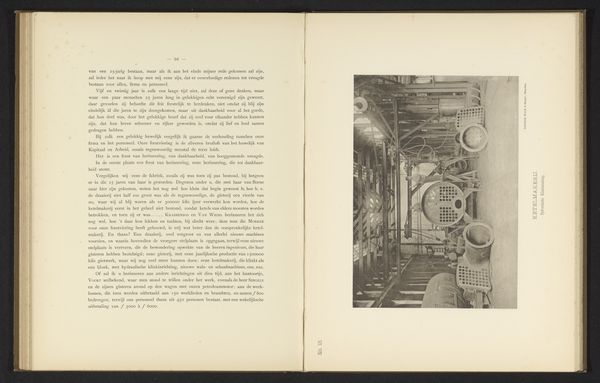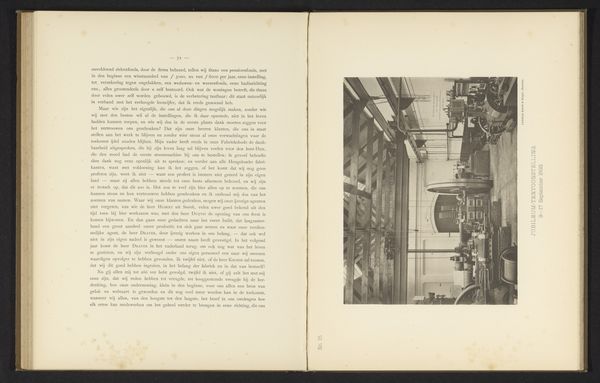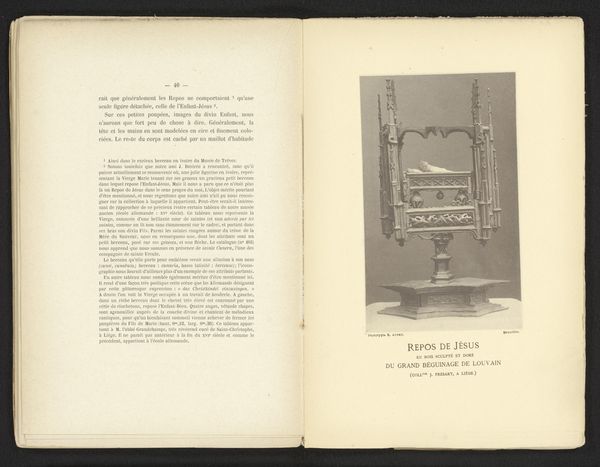
Kast met objecten uit Ninbo en Perzische en Indiase wapens uit de verzameling van Emil Riebeck, op de binnenplaats van het Kunstgewerbemuseum in Berlijn 1884
0:00
0:00
print, photography
#
weapon
# print
#
photography
#
orientalism
Dimensions: height 308 mm, width 233 mm
Copyright: Rijks Museum: Open Domain
Curator: What strikes me first about this photograph is the almost theatrical quality of the arrangement. It’s very static. Editor: It is! What we’re seeing is a photographic print from 1884, taken by Hermann Rückwardt. It depicts a cabinet displaying objects from Ningbo, along with Persian and Indian weapons, all part of Emil Riebeck’s collection at the Kunstgewerbemuseum in Berlin. Curator: It has the aura of a Wunderkammer, a cabinet of curiosities. I feel an urge to touch everything, as if unlocking its secrets. A desire that mixes both fascination and, if I may, slight uneasiness. The weapons make one pause... Editor: Indeed. The arrangement of the weapons and artifacts tells a potent story about European collecting practices in the late 19th century and, more critically, of cultural appropriation and imperial ambition. Riebeck amassed this collection—reflecting an era obsessed with categorizing and owning cultures that were seen as “other." Curator: So it’s all about "discovery," or in this case "possession"? And, to go a bit further, a silent violence inherent to collecting practices, then? Editor: Precisely. By placing these items within a European museum context, their original cultural meanings and purposes are somewhat erased or, at least, repackaged within a Western narrative of exoticism and control. It speaks to the unequal power dynamics between the colonizers and the colonized. Curator: You know, I find this photo deeply sad. To strip objects from their homes, their rituals. To confine them in a display… What was once alive becomes a still life, forever. Editor: Your reflections speak to the emotional impact these collections had—and still have. We see the result of colonial policies that valued the acquisition of “things” over the understanding and respect of entire civilizations. It invites critical reflections about representation, ethics, and restitution in museums today. Curator: Seeing these photographs today is a potent reminder, like witnessing the remnants of a dream—vivid and undeniably haunting. Editor: Exactly. The cabinet of curiosities becomes a mirror reflecting both a hunger for knowledge and the shadows of the past we must grapple with today.
Comments
No comments
Be the first to comment and join the conversation on the ultimate creative platform.
